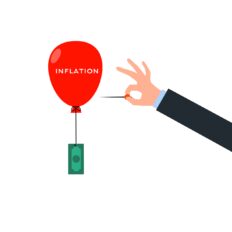Smart Strategies to Navigate Inflation as a Small Business Owner
 Inflation has ballooned worldwide in recent months and interest rates continue to rise so there’s no question that businesses are feeling the impact. Supplies cost more, employees are hard to find, and if your prices are not rising then your profits are shrinking.
Inflation has ballooned worldwide in recent months and interest rates continue to rise so there’s no question that businesses are feeling the impact. Supplies cost more, employees are hard to find, and if your prices are not rising then your profits are shrinking.
Here are some ideas that can help. If you are in financial distress, do not wait to ask for help or advice.
1. Study your data
Your numbers are always helpful, but in times of rapid inflation, you’ll be especially thankful that you keep a nice, clean set of books. Analyse your data to learn what products and services make you the most money, which ones cost the most to offer, and to identify where you can save.
2. Cut expenses
Now that you’ve identified where you can save money, go ahead and cut what you can. An expense must deliver one or more of three things to you and your business – Value, Joy or Time.
Value – you generate more profit than the expense you incur. Examples might be a new machine or software that automates a service; spreading fertiliser on a paddock; bringing on another productive employee in a professional services business.
Joy – it is not profitable but some things just make you happy. A new office chair because your current one is ugly and uncomfortable. A coffee machine for the office. Flowers at your reception desk.
Time – it is always limited and sometimes you are better to spend money to buy time. You have your accountant / bookkeeper prepare your quarterly BAS or you get a cleaner for your house. It will save you time you can spend in generating more Value into your business or time you can spend in activities that bring you Joy (a Sunday afternoon is better spent with friends and family than in mopping your kitchen before moving logging on to your Xero file to reconcile your bank account).
Focus on the items that keep you and your business as healthy as possible, and ditch the rest – at least for the time being.
3. Adjust your prices
Nobody likes to raise their prices, but the reality is you likely have no choice and customers understand that inflation is real and businesses need to adapt. Keeping prices the same would indeed be wonderful for your customers or clients, at least until you are no longer able to deliver them a quality service because you have gone broke. If you’re offering your products or services at the same prices as before inflation started to climb rapidly, you’re absorbing the cost.
How would you communicate a price increase? Keep it clear, transparent and to the point. I asked ChatGPT to provide a short draft communication:
Dear valued customer,
We wanted to let you know that due to rising costs and inflation, we will be implementing a small price increase on [date]. We understand that price increases are never welcome news, but we assure you that we have done our best to keep the increase as low as possible while still maintaining the high level of quality and service you have come to expect from us.
Thank you for your understanding and continued support.
Best regards,
[Your business name]
When you dig into your data, you may find that some things you offer actually cost you a lot of money. That’s not a sustainable business model – raise your prices to keep yourself afloat, or find items that cost less for you to sell.
4. Simplify and automate
If aspects of your business take a long time to complete, see if there’s anything you can do to reduce those hours. Switching to cloud accounting or inventory management software would be excellent examples, as doing so would allow you to use your valuable time elsewhere.
Identify where you can simplify and automate, and then do it. Then, even when inflation comes back under control, you will undoubtedly find that the saved time helps.
5. Focus on your customer
Remember that your customers are keeping you in business and experiencing inflation in their lives too – both at home and in their own businesses.
Keep the lines of communication clear and open, especially if you’re going to alter your offerings or raise your prices. It’s a lot easier to retain loyal customers than it is to gain new ones, so make sure they know how much you value them and communicate openly to maintain their trust and loyalty.
6. Consider your employees
Good help is hard to find. Those who work for you are feeling the pinch as well. While it’s essential to automate what you can, you must consider the consequences it will have on your staff. Identify how you can better use their talents if parts of their roles become automated.
7. Remember, this will pass
Inflation has happened before and will undoubtedly happen again after this. Historically, periods of inflation last anywhere from a few months to several years. One thing, however, must be remembered: all periods of inflation end.
While inflation is difficult for small businesses, there are steps you can take to reduce its impact. Focus on what you can control and face what you can’t with confidence and creativity. With some planning, clear communication, and smart adjustments, you will come out of this inflationary period intact. If you are facing challenges, speak with your accountant to discuss how we can help.





